All blog posts are written by and express the expert opinion of Dr. Leone. No information on this blog should be construed as medical advice, used for diagnosis or used to determine treatment. The reader is advised to seek out professional medical advice or make an appointment with Dr. Leone for a consultation.

G.E. Selects Holy Cross Hospital and The Leone Center for Orthopedic Care as a National Center of Excellence for Hip and Knee Replacement
General Electric/GE (NYSE: GE), one of the nation’s largest employers, has designated Holy Cross Hospital and The Leone Center for Orthopedic Care as a National Center of Excellence (COE) for hip and knee replacement surgery.
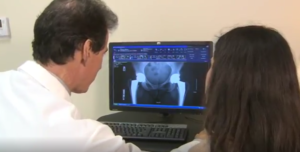
Frequent Reader Questions about Hip Dislocations and Problems
In my last Q&A blog post, I shared some of the most common reader questions about knee replacement surgery. Again, I will use a Q&A format to share some of the most-frequently asked questions and concerns relating to a hip dislocation or hip subluxation, a condition in which the hip joint is partially, but not fully, dislocated.

Dr. Leone Led Hip Section at the Second Annual Winter Orthopedic Symposium
Holy Cross Hospital’s Orthopedic Institute in conjunction with Massachusetts General Hospital recently hosted the Second Annual Winter Orthopedic Symposium in Fort Lauderdale, Florida. The two-day, nationally attended educational symposium included presentations on the latest advances in adult knee and hip arthroplasty, shoulder arthroplasty, joint preservation, advanced recovery and pain protocols.
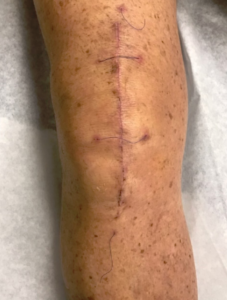
Use of a Subcuticular Suture to Close Hip and Knee Incisions and Instructions for Suture Removal
/
1 Comment
Many patients ask me questions about where I will place the incision and how it will be closed. While there are a variety of methods which surgeons commonly use, including sutures (also called stitches), staples and even glue, I choose to close with a single subcuticular (or intradermal) non-absorbable suture.
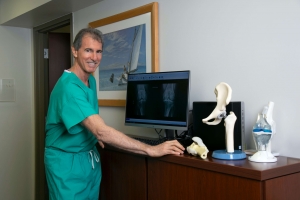
Steps You Can Take to Ensure the Best Result and Best Experience when Having a Hip or Knee Replacement
In a previous blog, “Why Joint Replacement Patients Are Getting Well so much Faster Today,” I described the reasons why patients are getting well so much faster today than even just a few years ago. This partially is due to new and improved surgical techniques and prosthetics, as well as better pain management and prevention strategies.
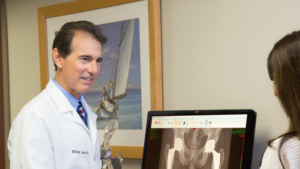
Multiple Hip, Knee and Back Pain Issues: Which To Treat First?
At The Leone Center for Orthopedic Care, I routinely see patients who present with pain and/or disability from arthritic disease in both hips or knees and sometimes a combination of hips and knees. Many of these same patients also have pain from back issues.
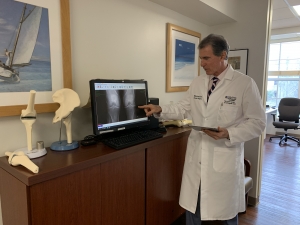
Frequent Reader Questions about Knee Replacement Surgery
In my last Q&A blog post, I shared some of the most common reader questions about hip replacement surgery. Again, I will use a Q&A format to share some of the most-frequently asked questions and concerns about partial and total knee replacement surgery (PKR, TKR).
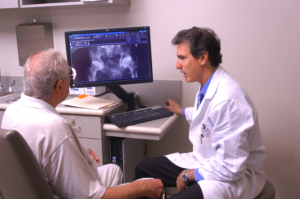
Frequent Reader Questions about Hip Replacement Surgery
Since beginning my joint replacement blog several years ago, I have received many comments and questions from readers on a variety of subjects and personal experiences. For this post, I will use a Q & A format to share some of the most-frequently asked questions and concerns about hip replacement surgery (THR).
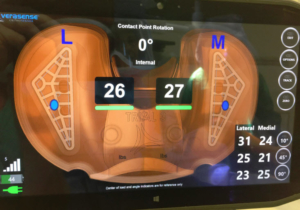
A Bad Total Knee Is Restored with the Use of an OrthoSensor Device
On June 29, 2016, I performed a really eloquent operation on a 55-year-old elementary school teacher from Nassau, Bahamas. I was so excited with how the case worked out for her that I decided to share the experience in a short blog.
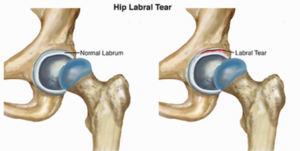
An Updated Look at the Effectiveness of Hip Arthroscopy: Who is a good candidate?
Arthroscopy is a surgical technique that has revolutionized how some complex problems that develop in certain joints are treated, including the hip, knee, shoulder, ankle, elbow and wrist.

Hip Arthroscopy: Who is a Good Candidate?
Arthroscopy is a surgical technique that has revolutionized how some complex problems that develop in certain joints are treated, including the hip, knee, shoulder, ankle, elbow and wrist.
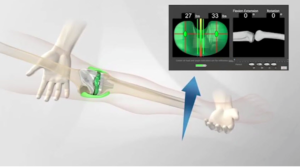
Using Sensor Technology to Diagnose and Precisely Correct TKR Failures During Revision Surgery
In the last of three blog posts on the topic of unsatisfactory results post-TKR (total knee replacement), I will discuss using kinematic sensor technology to help me more precisely diagnose and correct a painful TKR.
Most Shared
 Postoperative Care: What to Expect after Hip and Knee Replacement SurgeryApril 17, 2022 - 9:14 am
Postoperative Care: What to Expect after Hip and Knee Replacement SurgeryApril 17, 2022 - 9:14 am Why I No Longer Use the Anterior Approach for Primary Total Hip Replacement SurgerySeptember 5, 2021 - 1:13 pm
Why I No Longer Use the Anterior Approach for Primary Total Hip Replacement SurgerySeptember 5, 2021 - 1:13 pm Joint Replacement Isn’t Just For Olympic AthletesAugust 13, 2021 - 12:31 pm
Joint Replacement Isn’t Just For Olympic AthletesAugust 13, 2021 - 12:31 pm Should My Knee Still Hurt 1-2 Years After Total Knee Replacement?February 10, 2021 - 6:23 am
Should My Knee Still Hurt 1-2 Years After Total Knee Replacement?February 10, 2021 - 6:23 am

